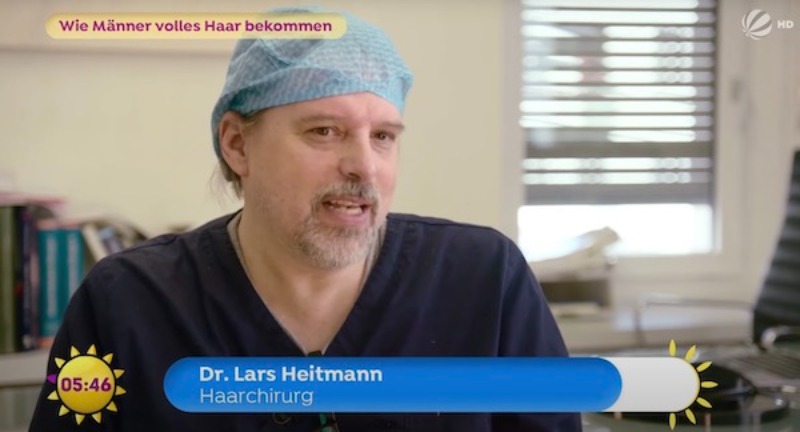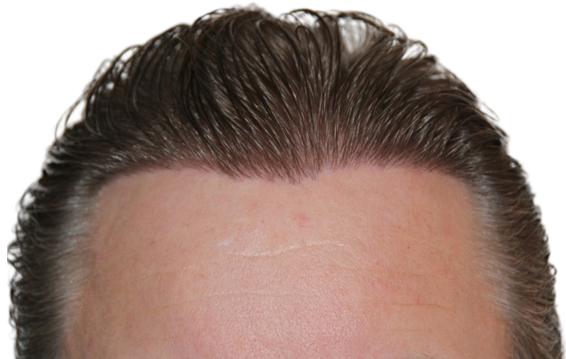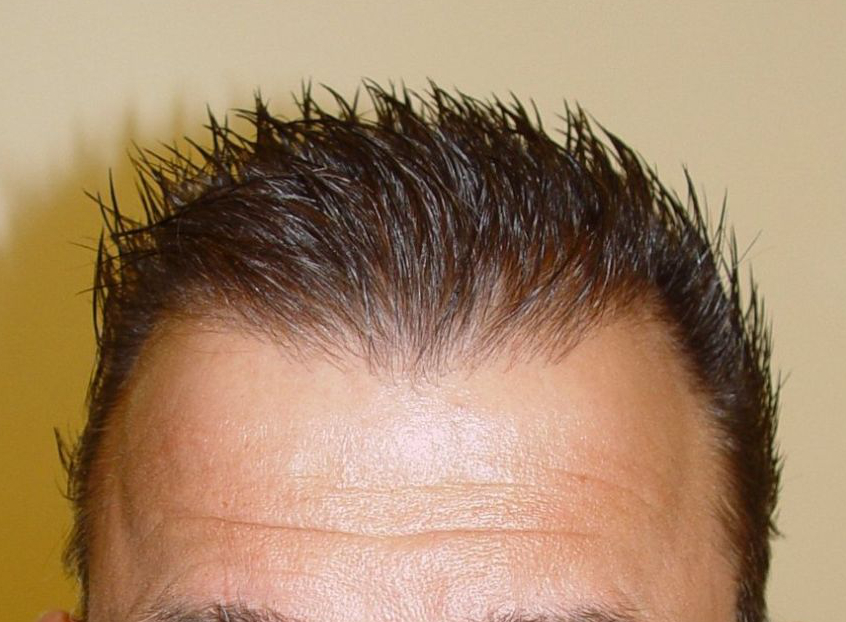FAQ`s about hair transplantation
Table of contents
- Does Dr Heitmann use micromotors for graft extraction?
- Are surgical procedures/steps delegated to assistants?
- How many grafts are transplanted by Dr. Heitmann in one day/per session and how many grafts in total in a hair transplantation lasting several days?
- How many grafts are useful for a hair transplant?
- Is the result of a hair transplant really permanent?
- Will I get my full youthful hair back with a hair transplant? Will my hair look the same again?
- Is a hair transplant painful?
- What should be considered before hair transplantation?
- What can be expected after hair transplantation?
- What should be considered after hair transplantation?
Does Dr Heitmann use micromotors for graft extraction?
No. Dr. Heitmann performs any graft extraction exclusively manually and personally - with 0.75 - 1.00 mm punches from Cole Instruments.
Are surgical procedures/steps delegated to assistants?
No. Dr. Heitmann does not maintain a team of assistants. He personally carries out all the important steps, from manual graft removal to the creation of the receiving orifices - to the insertion of the grafts.
How many grafts are transplanted by Dr. Heitmann in one day/per session and how many grafts in total in a hair transplantation lasting several days?
Dr. Heitmann transplants up to approx. 1,100 grafts per day/session, therefore no more than 3,300 grafts spread over 3 days. If more than 3,300 grafts are needed in total, further grafts are transplanted in a next session after a break of several months.
How many grafts are useful for a hair transplant?
Every person is unique and therefore every patient offers a different number of donor hair which can be used as donor hair. The individual hair characteristics (number of hair in the band of hair available, hair shaft diameter, colour contrast between scalp and hair, hair structure - wavy or straight hair etc.) must be taken into account in the planning just as much as the size of the recipient area to be treated. In order to be able to determine your individual number of grafts, a free and non-binding information consultation would be necessary beforehand.
You can get a first overview of your personal situation by using the following scheme for orientation.
Norwood scale II and IIa > Necessary grafts: 1500 and more if necessary
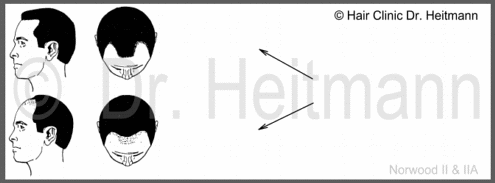
Norwood scale III , IIIa and III Vertex > Necessary grafts: 2250 - 3000 and more if necessary.
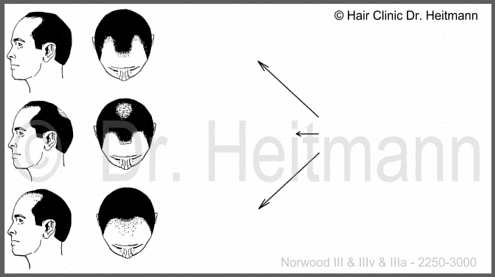
Norwood scale IV and IVa > Necessary grafts: 3000 - 4000 and more if necessary.

Norwood scale Va > Necessary grafts: 4000 - 6000 and more if necessary.

Norwood scale VI > Necessary grafts: > 6000 and more if necessary

Is the result of a hair transplant really permanent?
Hair naturally does not fall out again, because only hair roots (= hair follicles) from the rim of hair are used. Due to the hormone dihydrotestosterone (DHT), all the hair on the top of the head can fall out, only the hair in the band of hair are resistant to DHT and remain for life. This circumstance is used in hair transplantation and these hair are distributed to the bald and sparse areas. They therefore grow in their new place for the rest of their lives.
Additional note: It may be possible, but this is rare, that a rim of hair (the original donor area) "thins out" somewhat with age. In such cases, the result also becomes "thinner" with age. As mentioned, this is rare, but unfortunately cannot be ruled out.
Will I get my full youthful hair back with a hair transplant? Will my hair look the same again?
Hair transplantation is not magic. Depending on the size of the area, hair characteristics, and donor hair reserves of the hair crown, a larger or even smaller illusion of significantly more hair is created than is actually present. One should bear in mind that donor hair is only available in limited quantities and a hair transplant is only a redistribution of this hair. Therefore, one must be very careful and strategic in redistributing the hair. Realistic expectations make a hair transplant a success.
Is a hair transplant painful?
The treatment is painless due to the local anesthetic. The patient is given mild painkillers for any wound pain that may occur in the evening or at night after the treatment. In the case of a strip extraction, the wound pain may last a little longer, but here too mild painkillers are sufficient for the first few days after the transplant.
What should be considered before hair transplantation?
Please adhere to the following overview and clarify any further questions with Dr. Heitmann in advance:
- Please do not drink alcohol the day before the surgery and go to bed early.
- Do not drink coffee on the morning of the operation.
- Please wear comfortable clothing that does not have to be put on or taken off over your head.
- Stop taking medication such as aspirin or other painkillers 10 days before the procedure. Also vitamin preparations and topical hair growth products such as Minoxidil.
- If you have been prescribed important medication, please inform us before the treatment.
- If you regularly take blood-thinning medication (such as Marcumar), we must contact the treating doctor before the procedure.
What can be expected after hair transplantation?
A slight to noticeable swelling may occur in the treated area (after 2-3 days also in the face). This does not cause any pain, but can sometimes be very disfiguring ("boxer after a fight"). In the presence of others, you usually feel quite uncomfortable. Normally, however, the swelling goes down within 5-7 days. Sports, sweating, heavy physical work as well as working in dusty or humid environments should be avoided for the first 2-3 weeks to ensure healing without complications. Swimming (chlorine), sun exposure (tanning bed), sauna, and wearing toupees should be avoided for a period of 4 weeks. Immediately after the treatment, a scab will appear in the treatment area, which should be completely gone after about 2 weeks. Keep the area moist, either with saline solution or aloe vera spray. Do not touch the grafts, especially for the first few days. In the next 4-6 weeks, there will be a so-called shedding, i.e. most of the hair will fall out. The reason for this is the short-term lack of oxygen which the grafts suffer after extraction until they are inserted. As a result, the hair are rejected and a new growth cycle begins. After 4-5 months, growth will begin and you will be able to see and feel the first stubble. This can vary greatly from patient to patient and cannot be predicted. After about 7-8 months there is already a lot of hair and after 14-16 months, the complete result should be visible. The hair has now fully adapted to the surrounding hair and therefore many new hairstyle and styling options are possible.
What should be considered after hair transplantation?
You should not engage in heavy physical activity for the first 4 weeks. This includes sports or sweating in a sauna. Keep the wound area clean so that there is no risk of wound healing problems. Avoid direct sunlight, swimming pools with chlorinated water, and do not wear a toupee.
Read also the chapter Hair Transplant Dense Packing




